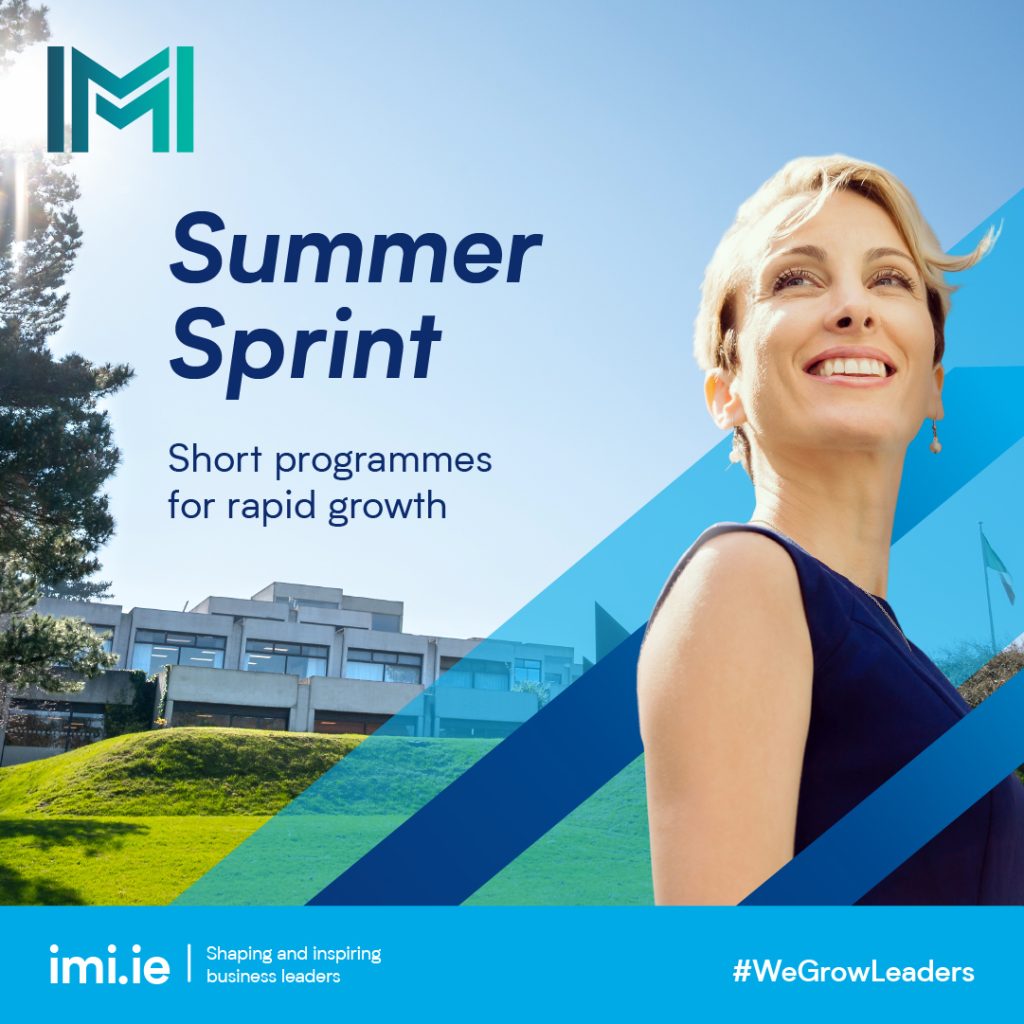Event Insights: Senior Leaders Breakfast Briefing on Business Performance in an Age of AI
By Farah Barry | 18th July 2024
Gartner’s analysts have estimated 50% of knowledge workers will use a virtual assistant by 2025. That feels remarkably soon, but PwC research is telling us that those very same AI-exposed sectors are experiencing 5x higher labour productivity growth than less exposed sectors. Now, that sounds like a strong commercial incentive to integrate AI into work flows, and fortunate timing for our most recent Senior Leaders Breakfast Briefing event, held at Lapps Quay in Cork. Of course, the productivity numbers and sheer scale of investment in AI are impressive, but our panel of experts – Linda Hayes, Paidi O’Reilly, Mark Purcell, and Barbara O’Gorman – in delivering their insights, emphasised the critical role of leadership in AI integration initiatives. Three areas in particular were a recurring feature of the discussion:
- Strategy
- Talent Management
- Risk Management
Mark Purcell’s Catalyx business has been using AI deep learning in its process automation products for several years but he was emphatic that “Every business must have an AI strategy”. He highlighted the difference between the AI uses of his company’s product development/design workers and those of his administration and management teams. This understanding of the differing potential impact for various worker cohorts was critical to developing an AI integration strategy. Barbara O’Gorman of Boston Scientific expanded on this organisational impact of AI by highlighting four distinct ‘personas’ in the manufacturing workplace: product builders, salespeople, office-based employees, and leaders. She correctly pointed out that not all productivity gains will go to those on laptops, and flagged productivity wins for workers using AI to address mundane tasks like annual leave approvals, or even finding car parking spaces. However, before any of these applications are introduced as part of an AI strategy, all our speakers highlighted a fundamental strategic building block. People.
Linda Hayes of Johnson & Johnson addressed the AI concerns of current talent and the fears of 56 % of employees (per Gartner) that AI will reshape their role. The bottom line for any leadership strategy in AI is that employees’ need for psychological safety, AI confidence building and, ultimately, trust is critical. To help combat these fears, J&J launched an internal chatbot and focused on transparent, ethical engagement with AI. The company emphasises continuous learning, dedicating days for employees to enhance their capabilities, including their AI skills. Barbara O’Gorman spoke about ensuring employees feel in control, rather than AI victims, being critical to any integration strategy. Of course, generative AI is only in its infancy so the challenge of building employee confidence requires some pragmatism.
Paidi O’Reilly, Adjunct Professor at the IMI faculty, advised leaders to use generative AI within their areas of expertise, balancing the speed of such technologies with personal expertise and oversight. This ‘boss-bot’ relationship can boost positive employee experiences and he described consultants not just completing tasks more efficiently, but with higher quality. Linda Hayes also pointed out the hierarchical divide in AI usage; leaders using the new technology more than more junior staff. Interestingly, this early leader adoption was seen in Johnson & Johnson (J&J) as an opportunity for leaders to demonstrate vulnerability by sharing their professional and personal use of AI. This culture of openness has fostered an environment where 87% of J&J employees want to develop AI-related skills. Mark Purcell agreed that AI integration should be led from the top but should also be championed throughout the organisation. And, there were some unexpected benefits too.
In Paidi’s area of expertise, abductive thinking applied to design and innovation, there have been encouraging recent examples of generative AI bringing fresh perspective to design projects. In fact, at the commercial coalface, Mark Purcell has confirmed AI is bringing different perspectives to Catalyx design processes. Furthermore, Paidi told us that there is increasing evidence that AI assistants can “get to know their user”, and even show empathy in challenging personal situations for the human users. However, these engagement advances come with risks.
Linda Hayes highlighted the need for transparency and ethical engagement with AI. This ‘glass box’ rather than ‘black box’ approach to AI is critical to stakeholder trust and addresses the following concerns:
- Data protection and individual’s privacy if generative AI is accessed on personal devices.
- The dangers of AI biases in CV scanning, customer engagement, peer reviews etc.
Indeed, Paidi warned of a particular “West Coast, male and tech bro” bias appearing in AI applications. All speakers agreed that a collaborative approach and regular expert human intervention was the recommended way to introduce AI. Of course, there was plenty of discussion about the dangers of feeding proprietary data into AI applications, and the need for encryption and cyber/cloud security measures. However, this should result in management vigilance rather than procrastination. There also was a general view that leaders needed to encourage employees to ‘just play with it’ and be honest about their own concerns and lack of confidence. In short, be the boss and lead with a people-centric focus rather than with a technology ‘stick’.
Without confidence or trust, employees and the organisation won’t buy into AI adoption. And, if PwC estimates are correct, that potential 5x productivity miss will undoubtedly be an existential event for the organisation. This AI message might seem stark, but there’s an encouragingly human aspect to the solution. Leaders should lead with a people-focused strategy….. then the bots will follow.



